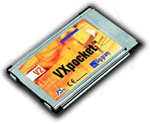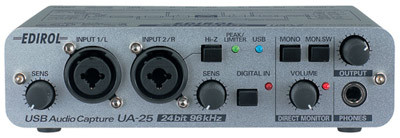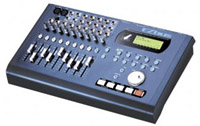Laptop Recording Systems
Laptop Recording is the new trend in the music industry
Professional Laptop Recording, editing and mixing on
a laptop is a dream that became reality in the last years. Notebooks and
especially the new interfaces like fire-wire and USB 2.0 are fast enough
to make it possible.
All you need is a good audio interface and you can
start recording in highest quality.
Also the harddisk is no problem anymore. You don't
have to use the relatively slow internal drive. Just plug in one of the
new USB2.0 or fire wire drives with up to 250 Gbyte and it will take a
long time to get them full.
So, what are the important things to look for when
it comes to Laptop Recording?
- A big hard disk (only if you want to record
internally)
- A fast CPU
- A silent fan. There are notebooks out there
that make a lot of noise when the fan starts to run. This is very
embarrassing when you want to record. It may even spoil the record if
you record in the same room. therefore look out for a quiet notebook
with a quiet hd.
- Fast connections (USB2.0, Fire-wire, etc...) to
an audio interface or external harddisk
- Long battery life only if you plan to record on
the road. Otherwise its not important.
- A good DVD/CD writer that also can grab audio
with bit accuracy and jitter free.
- If you want to produce complex music you
probably need a big screen for all the tracks and windows. Otherwise
you can save battery life and get a better portability if you choose a
model with a smaller screen.
- You will need lots of RAM for Laptop Recording
systems.
What is not that important?
- You don't need the fastest graphic card except
you like to play the latest games too.
- You don't need a true color display for audio
software.
Audio Interfaces
internal:
Probably
everybody tells you that the built in audio connections in a laptop are
not good enough to produce serious music. I don't know if this is really
true.
If you just
take the hard facts you must admit that a lot of hits have been recorded
on equipment much worse than the built in 16 bit soundcards. If you
think about using it for Laptop Recording, test if it's good enough for
your requirements.
The only thing
I would not recommend are the built in Mic-preamps. They are usually
really not great and the environment of a laptop is too noisy to use an
unbalanced microphone signal in his vicinity.
But if you
amplify the Mic signal with a good Mic-preamplifier, you can use the line
input. This should give you a decent signal to noise ratio.
external:
Most people
will decide for the external interfaces because they are not too
expensive, of higher quality and you need a Mic-preamp anyway.
What I suggest
is a breakout-box with a built in limiter or even a compressor to record
vocals. With compressed vocals you instantly get a better sound for most
projects.
Of course you
could also do that with your compressor plug-In but first this needs
processing power and second lets you waste digital headroom (digital
distortion sounds pretty nasty as you probably already know).
 The
probably smallest version of audio interface for Laptop Recording comes
from digigram. The Digigram VXpocket V2 or 440. The V2 card has
two, the 440 four balanced analog mono inputs at microphone or line
level, and two (440 four) balanced analog outputs. One stereo SPDIF
input and output and a LTC (SMPTE) time-code input. The
probably smallest version of audio interface for Laptop Recording comes
from digigram. The Digigram VXpocket V2 or 440. The V2 card has
two, the 440 four balanced analog mono inputs at microphone or line
level, and two (440 four) balanced analog outputs. One stereo SPDIF
input and output and a LTC (SMPTE) time-code input.
A breakout cable is provided with XLR connectors
for the analog inputs/outputs and chinch connectors for the digital and
LTC.
Here are some
examples of good audio interfaces for recording 1 or 2(stereo) tracks at
the same time on laptops. The
edirol
UA-25 USB is one of the few with built in limiter.


For
recording more inputs at the same time you would need a firewire or USB 2
interface. A very good choice are almost all of the Hammerfall products
from a German company. They have very low latency and are technologically
superb.
This
is the


If you like to have a real mixer with faders and knobs and if you plan to
record more than one or two tracks at a time, you can also take a look at
these workstations.
 Of
course they are not so small to put it in your pocket, but not too heavy
for taking it with you. And you can use them as a standalone digital
mixer without a computer. Of
course they are not so small to put it in your pocket, but not too heavy
for taking it with you. And you can use them as a standalone digital
mixer without a computer.
|

